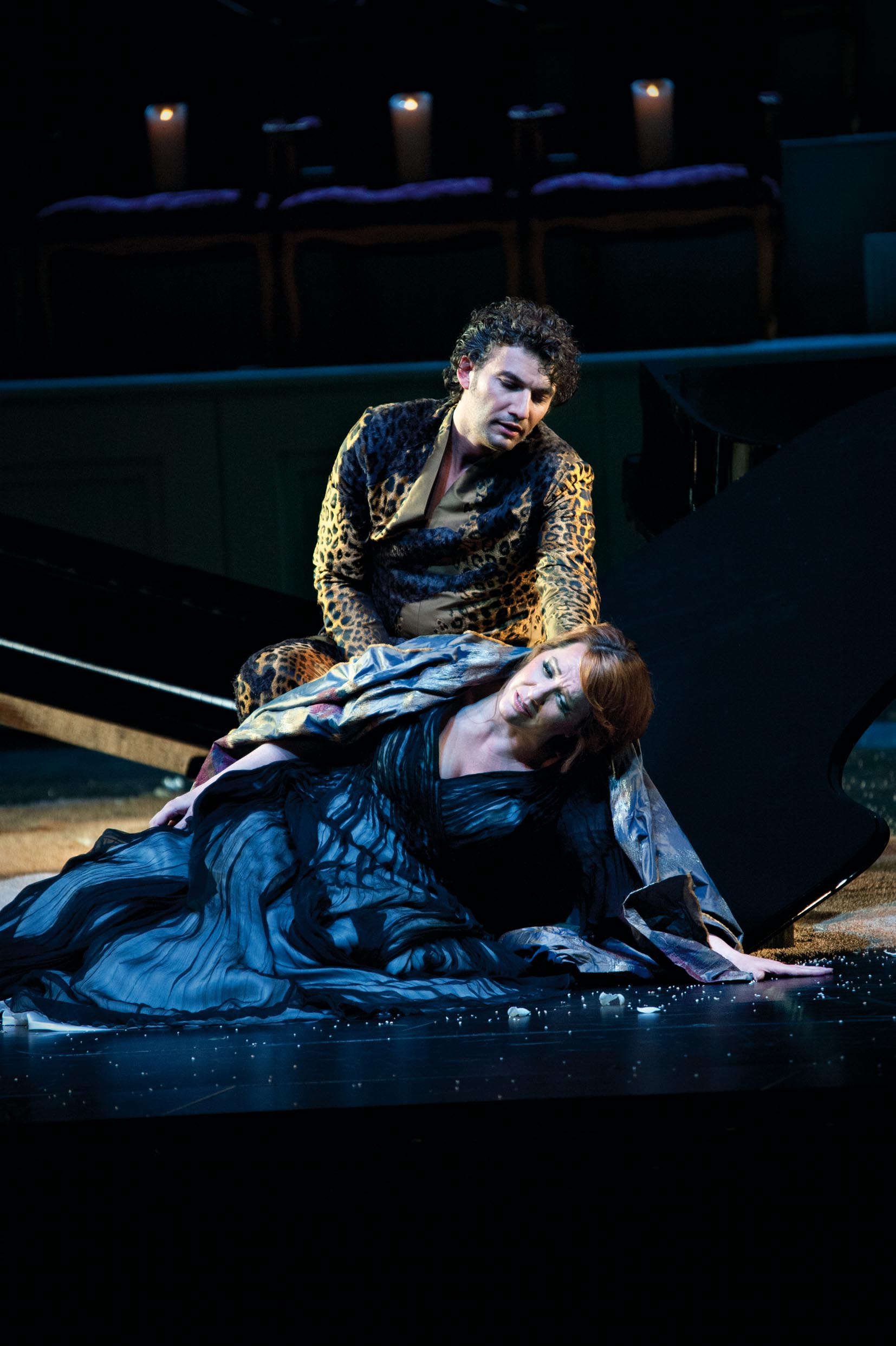
Ariadne auf Naxos
Ariadne auf Naxos (Ariadne on Naxos), Op. 60, is a 1912 opera by Richard Strauss with a German libretto by Hugo von Hofmannsthal.[1] The opera's unusual combination of elements of low commedia dell'arte with those of high opera seria points up one of the work's principal themes: the competition between high and low art for the public's attention.
For the opera by Georg Benda, see Ariadne auf Naxos (Benda).Ariadne auf Naxos
The instrumentation of the work is unusual, as its complement of 'double woodwind' is accompanied by significantly reduced brass and string forces on the one hand, and by a generous percussion section on the other.
Orchestral suite[edit]
Music was extracted from both versions of the opera by D. Wilson Ochoa in 2011 for a purely orchestral arrangement: Ariadne auf Naxos Symphony-Suite,[19] published by Boosey & Hawkes and Schott Music. The 7 continuous sections combine into a 38-minute continuous suite that functions like a symphony: the Prologue introduces all the major musical themes, while each subsequent excerpt serves to "develop" each of those themes. Richard Strauss' original instrumentation was retained, except for having the 2nd Oboe now doubling on English horn, to be used in covering some vocal lines. This suite was premiered by Giancarlo Guerrero and the Nashville Symphony in October 2011, and recorded by JoAnn Falletta and the Buffalo Philharmonic Orchestra in 2016.[20]
Notes
Sources